Architectural styles—even the most contemporary expressions of an architect's creativity—are drawn from the pre-existing, visual language of architecture inherited from earlier styles. Long after the original cultural context and technical limitations that produced a style cease to be, an architectural style can remain with us in legacy buildings, modern revivals and in elements repurposed and reinterpreted for newer styles
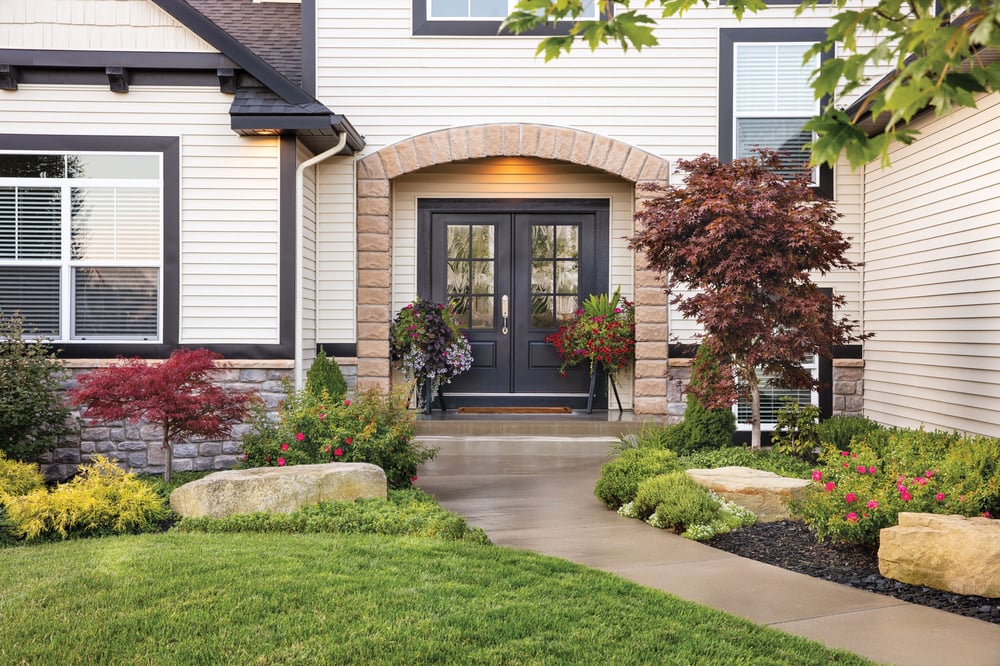
Consider the evolution of windows in architectural styles. Prior to the Industrial Revolution, limitations on the size of manufactured glass panes led to techniques such as caming for joining multiple panes together when larger, glass-covered windows were desired. These techniques gave rise to true divided light (TDL) and are reflected in architectural styles such as the Tudor style which often features transom windows and small panes separated by rectangular and diamond-shaped grilles.
Architects have continued to incorporate divided light into designs even though the manufacturing of large glass panes for use in windows and doors of any size has been possible for many decades. Divided light has transcended its origins and appears in a variety of architectural styles because it still has emotional resonance among homeowners who subconsciously include divided light in the visual language for "home".
Divided light as an architectural element, though, is not limited to windows. Architects and homeowners recognize how doorglass applied with divided light can complement modern and historic architectural styles by drawing upon the same visual language. When viewed from the street or curb, the entry door is the focal point of a home and the place where the dialogue between home and humans begins.
Doorglass with divided light is a salutation and first statement about the style and characteristics of the home and its occupants. In this white paper, we discuss how doorglass applied with TDL alternatives can complement architectural styles with the appearance of divided light while also mitigating challenges homeowners may experience with TDL.
While divided light still generates curb appeal, modern requirements and expectations have made TDL cost-prohibitive or otherwise impractical for many homeowners.
As an alternative approach to providing divided light, manufacturers have developed Simulated Divided Lite (SDL) and Grilles Between Glass (GBG). Rather than separating multiple individual panes with muntins, SDL and GBG provide the appearance of divided light by applying superficial muntins or grilles to larger panes in doorglass and windows. SDL and GBG are less expensive than TDL, which requires the engineering and installation of more components including multiple panes, the wooden muntin framework and concealed pieces meant to limit the leakage of air and heat through the gaps between the panes. Using a glass "sandwich" also helps eliminate air and water leakage.
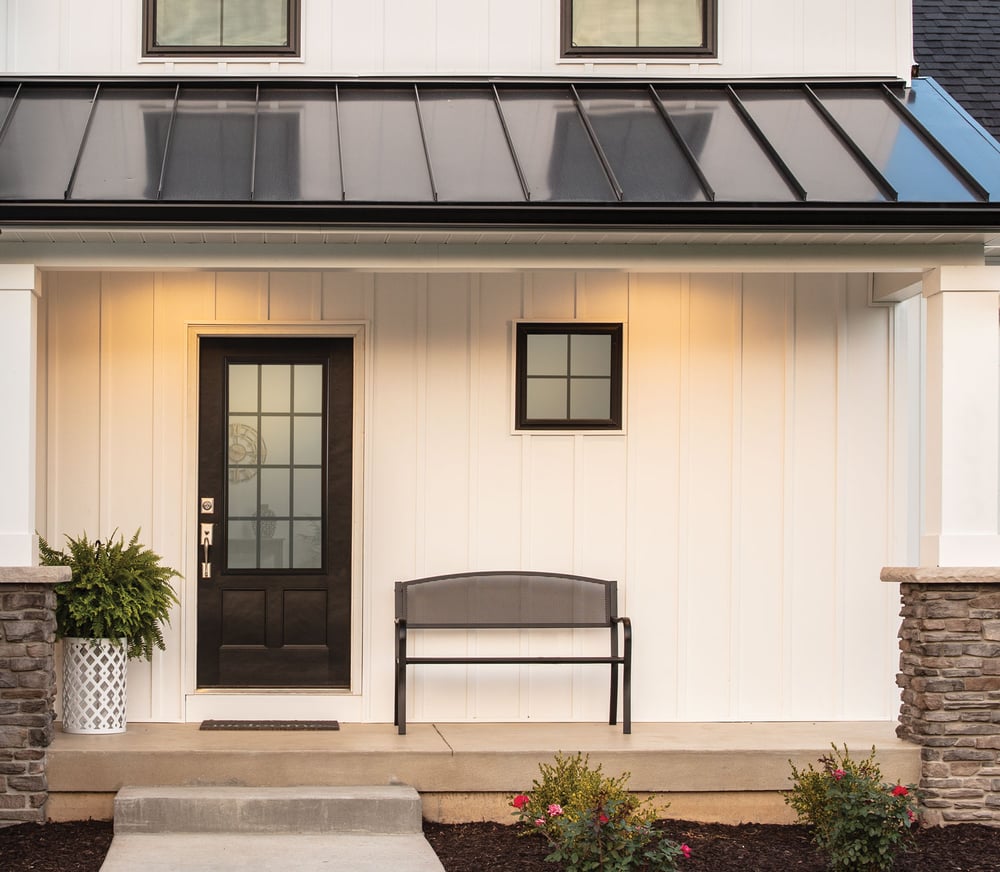
Alternatives to TDL also provide the benefits of simplified maintenance for homeowners. In most cases, TDL is created using wood grilles which, over time, require maintenance and upkeep and may deteriorate. SDL options from Western Reflections, Inc. incorporate grilles made with FiberMate® material and require little maintenance once they have been painted or stained. GBG options also require less maintenance than TDL. GBG grilles are encapsulated within two panes of glass and therefore don't require individualized cleaning for each pane.
Let's discuss the differences between SDL and GBG. Particular attention will be given to doorglass, which, in combination with a home's windows, creates a lasting home design statement.
Available at a lower cost than SDL, GBG features grilles applied between two panes. The approach of housing the grilles within the glass simplifies maintenance for homeowners who can easily clean the outdoor-facing pane and the interior-facing pane without the additional depth of the grilles causing obstructions.
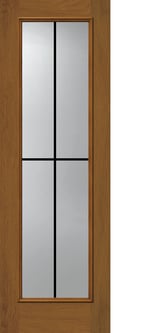
With SDL, grilles are applied to the outdoor-facing and/or interior-facing sides of a doorglass. SDL replicates the look of TDL at a lower cost with panes of glass and spacers that add dimension. Western Reflections developed injection-molded SDL frames produced by a process where the SDL bar and frame are created together instead of having the bar applied to the glass and frame separately. This simplifies installation and reduces the chances of warping or separation from the frame.
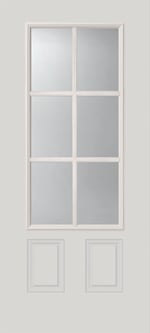
Here are some of the residential architectural styles and window designs that can be completmented and enhanced with SDL and GBG doorglass options.
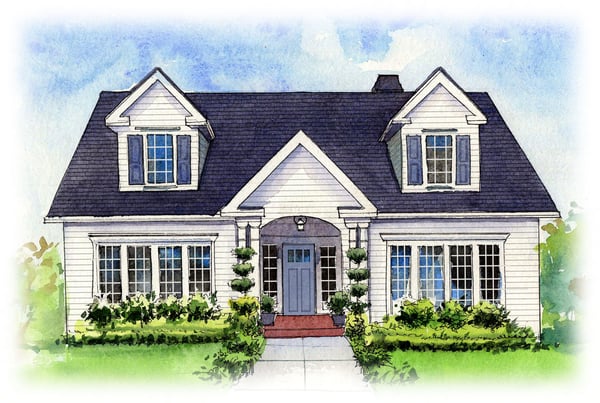
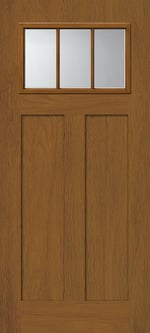
17th century New England colonists built these simple homes featuring flat, symmetrical facades.
The classic facade had a centered front door, with transom windows, double sidelites to widen the entry way, and two multi-paned, double hung windows on each side. The design was originally a homage to the low, broad style of building in England, but adapted for New England's heavy snowfall to feature pitched, gabled roofs. Despite adaptions over the years, today's homes still feature defining characteristics of the earliest Cape Cods: symmetry, steep roofs and divided-light windows.
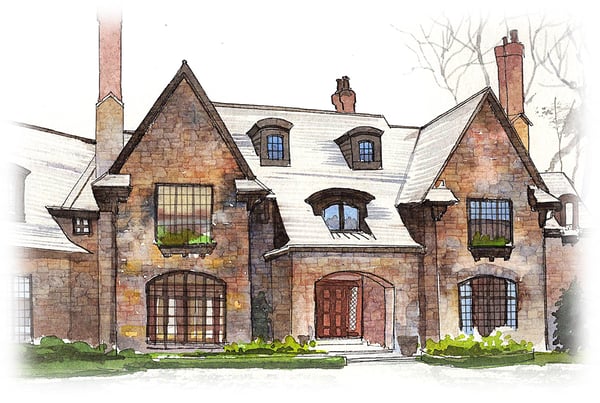
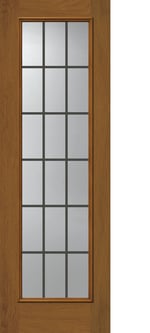
The Tudor style home plays on design elements from Renaissance and Gothic architecture such as decorative exposed timbers and vertical lines used wherever possible—including within windows.
Tudor windows use multiple panes of squarecut glass, often positioned diagonally within the frame in contrast to the bold straight lines created by timbering. The clean lines are also often contrasted by extraneous design details, including elaborate chimneys, irregularly-shaped rooms and embellished doorways, or using transom windows for subtle line "breaks".
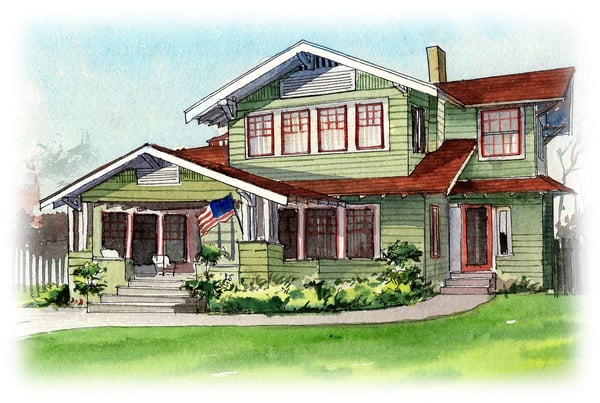
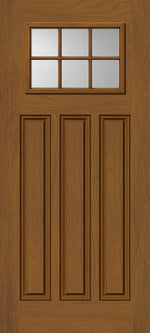
Craftsman style homes were first designed in the "arts and crafts" architectural movement, which favored handcrafted, unique touches.
Though Craftsman homes are known for individuality, a handful of elements that define the style including wide, covered front porches, exposed wooden structural elements, interior nooks, window seats and built-in storage. Another common element is double-hung windows with divided light in the upper window only. These divided-light windows are typically complemented by narrow divided light within the doors for a more complete design.
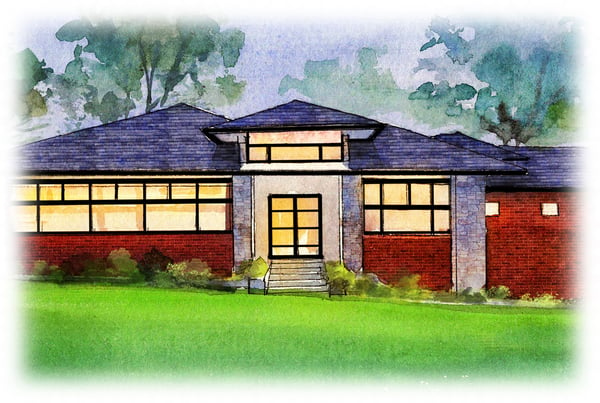
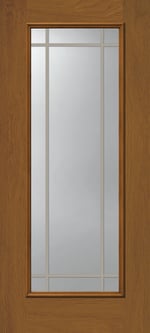
The Prairie style was one of the first uniquely American architectural styles, popularized in the late 19th-century American Midwest.
Complementing the region's flat landscape, these homes are typically long, flat and heavy on horizontal lines, often designed with rows of windows on the exterior and built-in shelving and seating inside. Prairie-grid windows and doorglass take on a less traditional style of divided light, with small square panes in the corners, long lites along the top, bottom and sides, and a larger pane in the center.
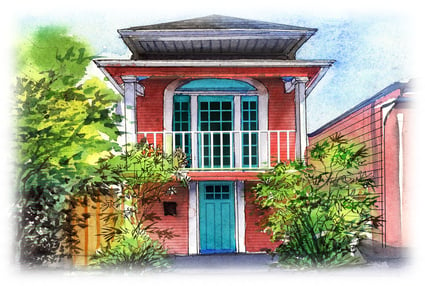
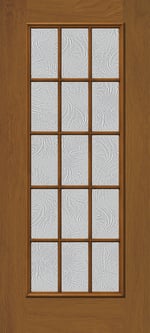
Louisiana Shotgun style homes—common in New Orleans—are deep, narrow homes. They were historically only about 12 feet wide, just able to fit a door and one or two tall windows designed to allow maximum light inside.
Shotgun homes appeal to Southern homeowners for their open floorplans and tall ceilings, which help ventilate the home in humid weather. Divided light originally supported the larger panes of glass needed for tall windows. Architects continue to select divided light for windows and doorglass to maintain the integrity of the historic style.
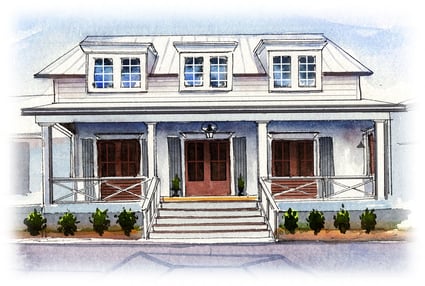
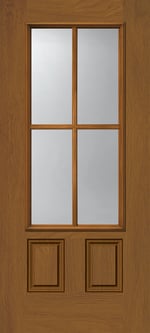
The Modern Farmhouse style combines sleek, contemporary lines with a cozy farmhouse aesthetic. Use of multi-paned windows, lap siding, natural textures, gabled roofs and large porches pay tribute to traditional farmhouse architecture.
Modern elements are brought in through light color palettes and industrial lighting. Modern Farmhouse styles favor an abundance of windows and moveable glass doors to allow in natural light and provide a connection to the outdoors. Divided-light glass is used to further emphasize the rustic elements of the home, where a single pane might appear too modern against the surrounding design.
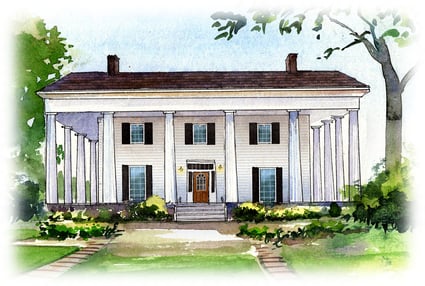
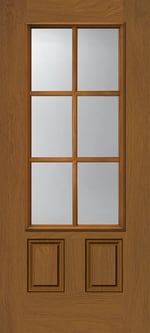
Modern Antebellum style homes tweak a traditional style to fit today's trends. They are stately homes that often welcome visitors with tall, bold columns, square pilasters, wide front porches, and transom and side-lite window features that serve in homage to historical Antebellum design.
Divided-light windows surround the home to fill it with natural light, and are one of the few elements that is consistent from front to back of the house. Antebellum homes aimed to evoke a sense of hierarchy within the details, with grand facades transitioning into simpler side and rear profiles.
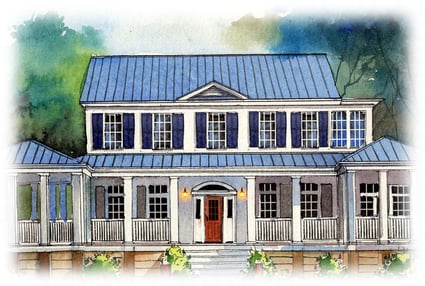
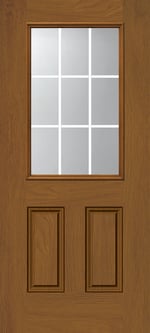
The North Carolina Low Country Home style is based on the practicalities of coastal North Carolina's early architecture.
Meant to be practical and understated, these homes provide comfort against the area's hot, humid climate by incorporating tall ceilings, double hung windows and open floor plans to help ventilate the home. Divided light windows were used to add a "colonial" element when this design first gained popularity, and continue to be used in today's designs. Covered porches and shutters are also common, as they help shade the home's interior.
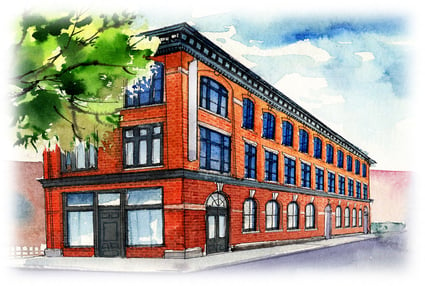
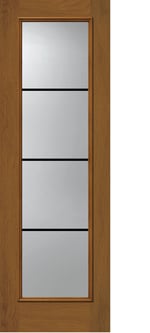
Old commercial spaces-turned apartments have gained popularity in urban neighborhoods. The Urban Loft style is characterized by a large, open floorplan with minimal internal walls for an industrial aesthetic.
Defining characteristics include high ceilings, exposed beams and oversized floor to ceiling windows. The large windows allow light into all parts of the space, including any mezzanine or upper-level living areas, but were originally installed before single panes of glass were produced large enough for the frame. Though the original glass may have been replaced, the multi-pane look has stood the test of time.
SDL and GBG doorglass options are cost-effective complements to the aforementioned styles. Offering simplicity, clean lines and simple shapes, these versatile glass solutions uphold traditional styles while at the same time adding a touch of modernism to more contemporary home designs and blend well with windows of a similar style.
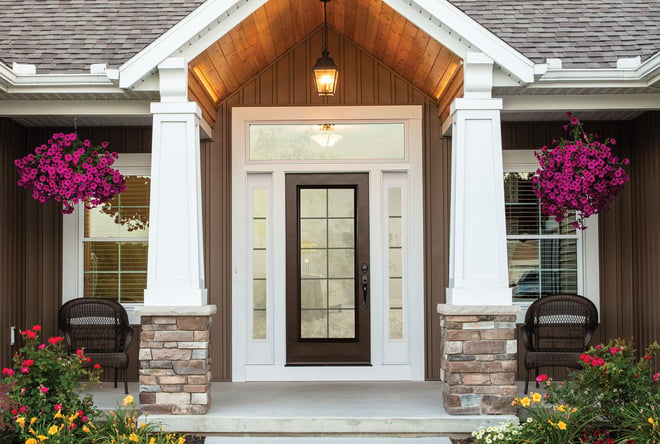
Western Reflections provides SDL in clear and textured glass in Rain and Baroque textures for on-trend design elements and privacy. The Rain texture offers an asymmetric and playful design that also brings increased privacy to a home. As the name implies, the Rain texture resembles a downpour as it runs down a glass surface. The Baroque texture offers a more moderate level of privacy through a flowing design and the omission of hard lines in the glass for a more soothing appearance. Each of these are available in configurations that complement multiple home styles, as well as in Low-E options that contribute to energy efficiency measures.
GBG options from Western Reflections include a full assortment of size and grille configurations to match any surrounding architectural detail. Western Reflections recently introduced horizontal grille configurations, which play on urban design tastes. More traditional, rectangular styles are also available, with 4, 6, 9 or up to 18 squares in the grille design. The latest color options, including black and two-tone grilles, add even more diversity to Western Reflections' GBG offerings.
Download this white paper:
Download the most recent version of Adobe Acrobat Reader